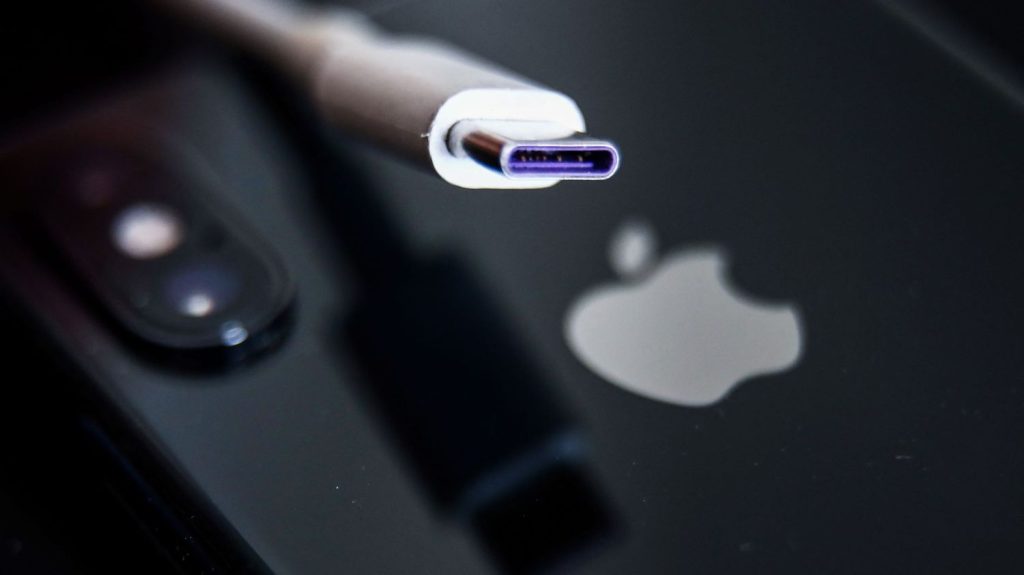
Phones, tablets, computers… Five questions about the soon-to-be-compulsory universal charger in the EU
“Do you have an iPhone charger? No, sorry, only for Samsung…” This exchange should not be in Europe soon. And for good reason, from the fall of 2024 the European Union will impose a universal wired charger for smartphones, tablets, consoles and digital cameras. Apple-branded products are also affected. Franceinfo answers five questions about the arrival of this little revolution in your closets.
1When is this charger mandatory?
By the fall of 2024, all mobile phones, tablets, e-readers, headphones, digital cameras, portable video game consoles, and portable speakers should have a single charger.
✔️ Global Charger: The European Parliament and the Council have reached an agreement!
In the fall of 2024, USB Type-C will become the common charging port for all mobile phones, tablets and cameras in the European Union.
Learn more ⤵️
– European Parliament in France (Europarl_FR) 7 June 2022
Laptops will be subject to the same single charger requirements by the spring of 2026, according to the political agreement reached on Tuesday (June 7). This text will be formally approved after the summer by the European Parliament and the European Council, the body representing countries.
2What will it look like?
Surely you already know that. The only device chosen by the EU is none other than the USB-C charger that already powers many devices. No, it’s not the large rectangular plug you always plug the wrong way (USB Type A), nor its thin still non-reversible version (micro-USB), but its modern version (Type C), which is smaller and reversible thanks to its rectangular shape.

This is not all. The text also provides for harmonizing the charging speed of devices that allow fast charging, in order to prevent it from being restricted when using a charger of a different brand. Finally, labeling will be improved to better inform consumers, who will be able to purchase a device with or without a charger.
3What about wireless chargers?
While this universal wired charger should be popularized in the fall of 2024, some manufacturers are already taking a step forward. More and more electronic devices allow wireless charging, via an induction charger. The European Union is well aware of this issue andThe text also paves the way for future standardization of wireless charging technologies.
Thus, with the spread of wireless technology, the commission will be mandated to develop it “Delegated Procedures on Interoperability of Shipping Solutions”i.e. regulations that can be applied directly without being subject to a vote in the European Council or the European Parliament.
4So Apple will have to comply?
Yes, this time Apple will not be able to play alone. The American manufacturer will have to abandon the popular Lightning charger, which was introduced in 2012. Until then Apple had always refused to use an open and unified solution such as micro-USB or USB-C, but preferred their “proprietary” formats, incompatible with brands Other electronic devices.
Despite this, an iPhone with a USB-C port may never be there. How ? Simply by removing the wired charger from the smartphone. For several years, Apple has been relying more and more on wireless (or inductive) chargers, such as the Magsafe device sold (at an additional cost) with its new iPhones. This wireless technology could become the only way to recharge Apple products, according to an expert Nomirama.
5What is the purpose of this bond?
The goal for the EU is twofold: to simplify users’ lives and reduce the environmental impact of these devices. “Consumers will no longer need a different charger and cable every time they buy a new device, and they will be able to use one charger for all their small and medium-sized electronic devices.”The House explains, eliminating unnecessary accessories.
This regulation could allow European consumers, who spend 2.4 billion euros a year on the purchase of chargers alone, to save at least 250 million euros a year, according to the European Commission. Unused magazine waste, estimated at 11,000 tons per year, can be reduced by about 1,000 tons.
Politically, this measure seems unanimous. “Charging systems have trapped consumers in a brand and forced us to bundle cables at the expense of our wallets and natural resources.”Green MEP David Cormand welcomes you. Geoffroy Didier, his counterpart from European People’s Party (ranked in right), salute “Volunteer” The European Union in the face of “Inappropriate waste dictated by the commercial interests of some industrial groups”.
Who is against it?
These new rules do not satisfy everyone. And in the first place, Apple. The American manufacturer claims that its Lightning charger powers more than one billion devices worldwide and European text estimates that ‘It will stifle innovation’ The European Union will be isolated from the rest of the world because of standards “Outdated”. USB-C technology can already quickly become obsolete, like the micro-USB port that was introduced in the first version of the European project. What some manufacturers worry about. By excluding some chargers and smartphones in circulation, Brussels “It will impose huge losses on manufacturers, limit consumer choice and generate e-waste.” Additional, Apple insisted on Tuesday.

“Incurable web evangelist. Hipster-friendly gamer. Award-winning entrepreneur. Falls down a lot.”
